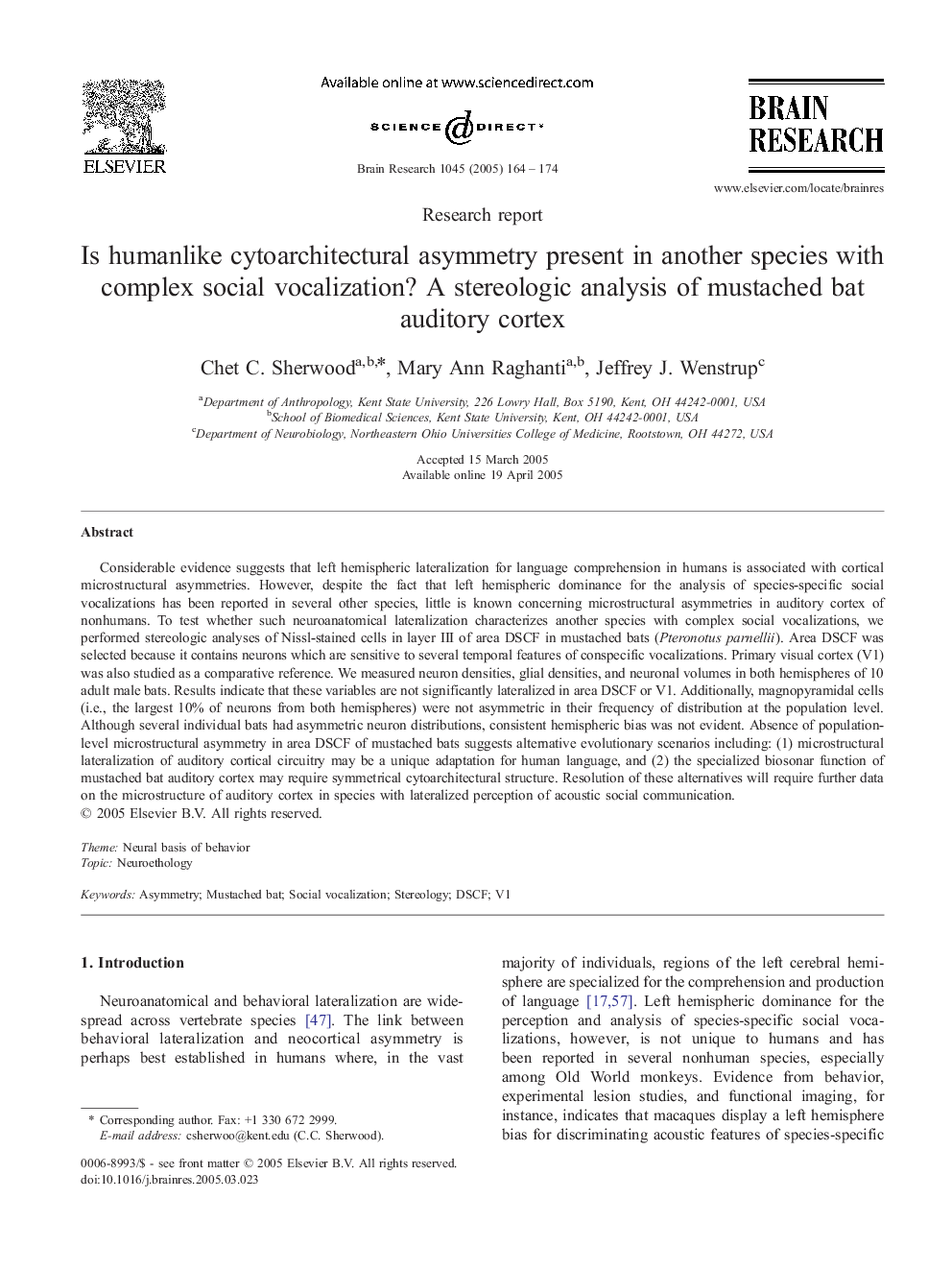| Article ID | Journal | Published Year | Pages | File Type |
|---|---|---|---|---|
| 9416296 | Brain Research | 2005 | 11 Pages |
Abstract
Considerable evidence suggests that left hemispheric lateralization for language comprehension in humans is associated with cortical microstructural asymmetries. However, despite the fact that left hemispheric dominance for the analysis of species-specific social vocalizations has been reported in several other species, little is known concerning microstructural asymmetries in auditory cortex of nonhumans. To test whether such neuroanatomical lateralization characterizes another species with complex social vocalizations, we performed stereologic analyses of Nissl-stained cells in layer III of area DSCF in mustached bats (Pteronotus parnellii). Area DSCF was selected because it contains neurons which are sensitive to several temporal features of conspecific vocalizations. Primary visual cortex (V1) was also studied as a comparative reference. We measured neuron densities, glial densities, and neuronal volumes in both hemispheres of 10 adult male bats. Results indicate that these variables are not significantly lateralized in area DSCF or V1. Additionally, magnopyramidal cells (i.e., the largest 10% of neurons from both hemispheres) were not asymmetric in their frequency of distribution at the population level. Although several individual bats had asymmetric neuron distributions, consistent hemispheric bias was not evident. Absence of population-level microstructural asymmetry in area DSCF of mustached bats suggests alternative evolutionary scenarios including: (1) microstructural lateralization of auditory cortical circuitry may be a unique adaptation for human language, and (2) the specialized biosonar function of mustached bat auditory cortex may require symmetrical cytoarchitectural structure. Resolution of these alternatives will require further data on the microstructure of auditory cortex in species with lateralized perception of acoustic social communication.
Related Topics
Life Sciences
Neuroscience
Neuroscience (General)
Authors
Chet C. Sherwood, Mary Ann Raghanti, Jeffrey J. Wenstrup,
